We had about 15 to 20 board and card games to choose from. That was a decent selection, but ours was nothing compared to my aunt and uncle. They were a very conservative religious family and had banned tv from their home. Instead they had a music room and a converted pantry off the kitchen devoted to holding their games. Top to bottom on all three walls, on every shelf there were board and card games.
Call me a "geek" (I'm proud of the label, btw) but I thought it was heaven.
You may have thought about beginning a "game night" for your family and friends, but are either non-plussed by the games available at Toys-R-Us, Walmart, Kmart or Target. Or you want to expand from the games you already have. Follow me over the fold for suggestions of games you've probably never heard of and a brief introduction into a subculture you may know little to nothing about.
There is something about face to face gaming that you can't get playing on a computer, either with the computer as your opponent or on-line with humans as you opponents (even if you have headphones and a mic and interact with others). It's the many levels of socializing that occur when your sitting across the table with someone. One learns to tell what is nuance, sarcasm(snark), humor and body language and balancing that with what one actually says.
Gaming is also a non threatening way to engage your tween and teenagers.
Besides they are cheaper than tickets to the movies. )There are reasons poor college students form gaming groups.) A $30.00 game can be brought out many times. Plus sometimes there is no better way to spend a winter's day, time in an airport during a long layover, or stuck in a camper while it's raining cats and dogs outside.
You may have once liked games and may still feel like playing a game with friends and family, but the thought of playing the board games from your youth leave you a little cold.
Three day monopoly games and constant cries of "let's play Sorry" from you little sister (for the 1,255,357 time) can do that to you.
I can actually see it in people's eyes when I mention that I'm a gamer. They reach back in their memories to Clue, Life, etc. that they overdose on, were forced to play, or simply didn't like the selection, and you can see their edges start to turn a sickly shade of green.
They even express surprise that board and card games are even being made any more.
But wait! There are more games than what you find at Toys-R-Us, Walmart, Kmart and Target. And more board and card game companies than just Hasbro (who bought up Milton Bradley and Parker Brothers).
A Short, Brief, Minuscule, Intro into the Gaming Subculture
These board and card games and there companies offer a greater variety of the type of game and the strategy needed to win. These are companies with names like Face 2 Face Games, Z-Man Games, Cheapass Games, Rio Grande Games, Game Wright, and Days of Wonder, to name a few.
These games can be found a niche game stores all over the US. Here are examples from three states Danger Planet, The Compleat Strategist, Rivendell Books and Games, Game Keeper (which is the company store for Face 2 Face Games), The Wizard's Chest, and Bonnie Brae Hobbby. I don't know where or if there is a list of these niche game stores across the US, but asking about it on the Game Groups Forum at BoardGameGeek should help point you in the right direction)
What's neat about these niche game stores is that they are a focal spot for the gaming community. Not only to many teach games, but they provide space to pay games. You can also find flyers for active gamin groups in your area (you are generally happy to teach games), and flyers for local, national and international gaming conventions (that's a whole nother diary), they teach games there too. And if you can't find the game you want on-line or on ebay, you can purchase games on-line from many game stores and have them shipped.
I guess at this point I should tell you that I have taught games in after school clubs and summer camps for a few years now.
It also may not hurt to tell you that my little girl wish came true. We are a gaming family (all 6 of us) and have about 100 games (that's nothing a friend of mine has 300).
The following, without further ado, are 10 games that I can recommend. They are fairly easy, and I will explain them and give a sense of the minimum age that enjoys them. I am hoping I will be able to write a few more diaries on this, the why of games, games that teach, games that allow people to understand politics, how games help us at all stages in our lives and yes, recommend more games.
But for now, here's my first 10 recommendations:
***********
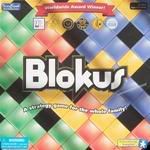
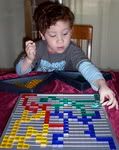
1. Blokus
The pieces of this game look just like they belong in Tetris. Each person has their own colored peices (four colors) and must place as many of them as they can on the board. One piece per turn. If a player cannot place a piece during their turn they are out.
Each of a players pieces must touch at least another of their pieces, but ONLY at the corner. Two (or more pieces of the same color) cannot touch anywhere but a corner, straight edge touch is disallowed.
However two pieces of different colors may touch along the straight edge.
up to four players, can be found at Toys-R-Us and niche game stores
helps with spatial relationships
minimum = 1st grade (though I know kindergartners who like this game)
***********

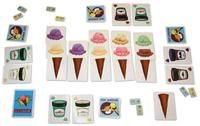
2. Ice Cream
This is essentially a matching game and girls really, really love it. I didn't believe that claim at first but saw it time and time again.
The game begins by everyone getting a "pint" of ice cream card. There are different "flavors" of ice cream and the object is to collect as many scoops of ice cream as you can to fill your pint of the same kind of ice cream.
You score points by how much ice cream you get in the pints during four rounds.
After players have received their first pint, players then take turns making ice cream cones. No cone can have more than four scoops, but scoops can be any flavor. The only limit to the amount of ice cream cones that can be made is limited by the number of ice cream cone cards.
After all the scoops are on the cones, players are dealt another pint card.
Then taking turns each player can either "take a cone" or take another pint card.
If they take a cone they must be able to put the majority of scoops into the matching pint(s) they hold in their hand. What scoops they cannot use from the cone is put into the discard pile.
Points are award by how many pints have scoops "in" them.
At the end of the round gather up the scoop cards, shuffle and do it again.
That's the major gist of game play. Face to Face games has a pdf of the rules on it's website.
minimum = 1st grade
matching
game stores
***********
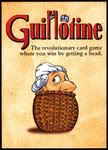
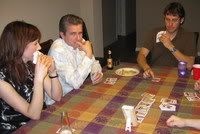
3. Guillotine
This is a game set in the French Revolution (in fact my middle son brought it to school so they could play it while they were on the section about the French Revolution)
On one end of the table the stand up cardboard picture of a Guillotine is placed. Then the cards of 12 nobles are placed in a straight line leading to the guillotine.
Players earn point for the nobles that reach the guillotine (earn more points for those in a certain group), lose points for every innocent to reach the guillotine and play cards that rearrange the line order, give one a point advantage, etc.
There are three rounds (days). The end of the day is reached when there are no more cards in line to the guillotine. However if Robespierre reaches the guillotine the day is over no matter how many cards are left in the line.
minimum = elementary
game stores
***********
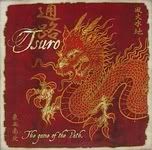

4. Tsuro
In every aspect Tsuro is a beautiful game, from the artwork to the simplicity of play.
Each player picks their pawn (looks kind of like a worry stone) and places it somewhere on the board edge at the various "start" ticks (yellow lines).
Then three tiles are dealt to each player. The first player (and then each player afterward) places his tile in front of his pawn and then move the pawn along the "road" to the edge of the tile.
Once a tile is placed a new tile is drawn, until the dragon tile is reached. The next person to go out once the dragon tile is out hands remaining tile to the holder of the dragon tile.
That player chooses the tile he/she wants and places the remaining tiles into the new draw pile, with the dragon tile on the bottom.
Ways to go "out"
The path created for the pawn leads them off the board = out
The path leads to two pawns on the same path (that's a "crash" as I've told the kids) = out
A player can only place a tile in front of their pawn. However if that tile creates an extension of the path in front of another players pawn, that pawn has to move along the new path too. (you can cause someone else to go out)
Pawns may not make right angle turns. They can only move straight along the path before them (or along it's curve).
minimum= kindergarten
game store
more info
***********

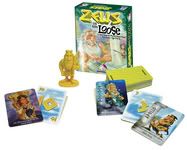
5. Zeus on the Loose
As long as someone you can add and subtract up to 100 anyone can play this game.
Play number cards to add up to 100. Play the lesser god wamy card that can reverse the number reached (73 becomes 37), skip someones turn, steal the Zeus figurine.
Players get Zeus by making the numbers in play add up to a multiple of 10,playing a card that is the same number as the one before it, or using a lesser god card that allows the steal.
The person who has Zeus once the cards/numbers in play add up to 100(+) wins. (It may not be the same person who brought the cards/numbers in play to 100)
minimum = must be able to add and subtract 2 digit numbers
game store
rules on line
***********

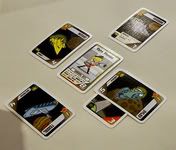
6. Mag·Blast Third Edition
Pick your alien space faring race, and ships that will guard the mother ship/planet. These ships can also "fire" on your opponents guarding ships and mothership/planet.
However attacks can be repelled completely if the attacker fails to make the necessary space weapon, explosion sound OR if the sound made is not determined good enough by the other players. (oh yes it does happen)
Fire from one ship can only hit the same side of the other ship (left to left) unless an all encompassing weapon card is used also not all weapons can be used on all ships (an orange weapon will not work on a green ship).
minimum= 8 years old
game store
more info
***********
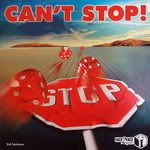
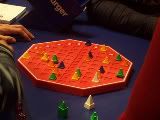
7. Can't Stop
You may have played this game as a kid, well it's back!
from boardgamegeek:
In this Sid Sackson classic, there is a board with all the possible results of two six-sided dice: two through twelve. The object of the game is to move a little marker to the top of three columns by rolling that result, but you need many more sevens than you need twelves, based on the likelihood of each result. During your turn, you roll the dice and place temporary markers onto the board. You can continue moving these markers until either none of your dice match (your turn is over and all progress you've made is gone), or cut your losses and end your turn (placing a permanent marker in your rows). Nice light filler for opening or closing a session.
You can totally find out how risk adversed you are.
minimum= 6 years old
game store
more info
***********

8. Liar's Dice
from wikipedia:
Five six-sided dice with traditional dot faces are generally used per player, with dice cups used for concealment. Poker dice can also be used, but some systems for bidding become difficult or impossible to use.
Each round, the players roll their dice while keeping them concealed from the other players. One player begins bidding, picking a quantity of a face 2 through 6. The quantity states the player's opinion on how many of the chosen face have been rolled in total on the table. A 1 ("ace") is often wild and counts as the stated face of the current bid, however the game can also be played without wilds (see variants). In a five-dice, three-player game with wilds, the lowest bid is "one 2" and the highest bid "fifteen 6s In turn, each player has two choices; believe the previous bid is true and make a higher bid, or challenge the previous bid as being wrong. Raising the bid means either increasing the quantity, or the face value, or both, according to the specific bidding rules used. Different bidding rule sets are described below.
If the current player thinks the previous player's bid is wrong, he challenges it, and then all dice are revealed to determine whether the bid was valid. Revealing the same number or more of the relevant face than was bid is a successful bid, in which case the bidder wins. Otherwise the challenger wins. A challenge is generally indicated by simply revealing one's dice, though it is customary to verbally make the challenge, by saying "I call you up", "I call", "You're a liar", or simply "Liar".
* Example: if a bid of "seven fours" is challenged, the bid is successful (and the player who made it wins) if there are seven or more fours, or less than seven fours but enough wild aces (1s) to total seven or more fours and aces (four fours and three aces, or five fours and two aces). The bid fails (the bidder is a Liar and the challenger wins) if there are fewer than seven total fours and aces combined (or if aces are not wild; see variants).
You can make this game yourself. Just do to a game store and buy 5 - six dice for each player (for 4 players you need 20 six sided dice) and tumblers like you can find from tupperware or cheesex dice cups (you can buy six sided dice there too).
(this was also "Pirate Dice" from the movie "Pirates of the Caribbean" )
minimum age = 8 years old
boardgamegeek listing
ehow to play
Wikipedia - Liar's Dice
***********


9.Carcassonne
This is a tile game set in medieval Europe. (There is actually a town/village of Carcassonne in France)
First players pick their pawn color. By the game playing public these pawns.playing pieces are called "Meeples" (they look like little wooden people).
Players randomly draw tiles (usually from a bag - I've bought many Crown Royal bags from Crown Royal drinkers for this purpose) and place them next to each other. Then the player who places the tile can claim something on the tile by using their meeple. Those "somethings" can be a road, a city, a monastery or a field.
Tile placement must make sense. for example: a road cannot end in a field )
You gain points by completing roads, cities, monastery grounds and how many cities/villages your farm supports. The person with the highest points wins.
mimum age = 8 years old
game stores
rules and more info
***********

10. Fluxx
Oh there are many different versions of Fluxx but they all have one thing in common, there are no set rules.
The rules change with every play of the hand as set for by the cards players lay down. One moment you think your about the win because you have laid down all but one of the "keepers" required for the goal. Then someone changes the goal.
I can't explain the game better than that. Here's what boardgamegeek said:
A card game where the cards themselves determine the current rules of the game. By playing cards, you change numerous aspects of the game: how to draw cards, how to play cards, and even how to win.
If your still confused (or you think this might be really fun) look at the picture below.
Though I do recommend playing Family Fluxx as regular Fluxx game deck is quite a bit bigger. (there is also "Stoner Fluxx," "Eco Fluxx," "Monty Python Fluxx," religious Fluxx and blank cards so you can make your own rules and keepers and such.
Minimum - 8 years old
game store
more info

***********
All pictures from BoardGameGeek
More games next week.




















